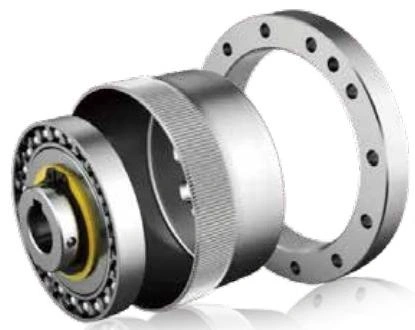Table of contents:
The Importance of Bearings in Robotic Joint Mechanisms
Selecting Bearings for Optimal Joint Movement and Load Capacity
Maintenance Tips for Prolonging Bearing Life in Robotic Joints
Innovations in Bearing Design for Advanced Robotic Articulations
The Importance of Bearings in Robotic Joint Mechanisms
Specialized bearings serve as the backbone of robotic movement, offering the precision and stability needed to achieve desired motions. Whether in humanoid robots or robot dogs, these bearings are fundamental in joints such as the hips, knees, arms, and legs. They convert motor-generated forces into controlled motion, enabling both fluidity and strength in various applications, from delicate tasks such as surgery to rugged industrial work. Bearings used in robots must excel in high precision, rigidity, and durability to withstand frequent movements, high-frequency shocks, and complex multi-directional loads. For instance, cross roller bearings and four-point contact bearings are widely deployed due to their ability to handle axial, radial, and tilting forces efficiently. These characteristics ensure dexterity and flexibility while maintaining the structural stability that robotic performance demands.
Selecting Bearings for Optimal Joint Movement and Load Capacity
When choosing bearings for robotic joints, identifying optimal performance characteristics is paramount. Precision is key; a slight deviation in bearing performance can lead to instability, compromising the robot's functionality. Bearings such as the RV reducer bearing, harmonic reducer bearing, and cross roller bearings are highly sought after in robotic applications due to their unique attributes. Harmonic reducer bearings offer compact designs and excellent load capacities, while cross roller bearings provide superior rotational accuracy and can carry complex loads in all directions. The materials used in the bearings also play a vital role. Lightweight yet durable designs ensure that robots maintain efficiency without being weighed down. Choosing specialized bearings for robot reducers requires analyzing the intended application, considering factors such as the expected motion range, load capacity, and environmental conditions the robot will operate in. Collaborating with a reputable bearing supplier or ball bearing manufacturer can make this selection process seamless, ensuring the right components match the robot's needs for precise motion control and longevity.
Maintenance Tips for Prolonging Bearing Life in Robotic Joints
While advanced bearings are engineered for durability, proper maintenance is non-negotiable to extend their operational life and maintain peak performance. Regular lubrication is crucial, as it reduces friction and prevents wear. Using the appropriate lubricant specified by the bearing manufacturer ensures optimal results. Routine inspections are essential to identify wear or damage early. Look for signs such as unusual noises, increased resistance, or temperature changes, which may indicate bearing fatigue. Keeping the environment clean and free of contaminants such as dust and moisture further enhances bearing health, as these particles can affect precision and cause premature failure. Proper installation is equally important. Bearings must be aligned accurately to avoid undue stress, which could lead to uneven wear and performance inconsistencies. Finally, adhering to the manufacturer's recommended usage limits for load and speed ensures the bearings function within safe operational parameters. Implementing these practices will not only prolong the life of specialized bearings in robotic joints but also optimize the robot’s overall performance.
Innovations in Bearing Design for Advanced Robotic Articulations
The robotics industry continues to innovate in bearing design to meet the demands of advanced robotics. Bearings are now engineered for more precise and dynamic movements, expanding their use across various robotic systems. Flexible bearings for robot reducers, like HYR harmonic reducer bearings, enable intricate, precise motions. Cross roller bearings, with improved load-handling capabilities, reduce vibration and enhance joint accuracy. Lightweight designs lower inertia for faster joint responses while maintaining stability. Bearings with low-noise and low-temperature rise technology boost efficiency, especially in high-frequency operations. These developments ensure bearings meet the needs of current and future robotic systems. Applications like humanoid and quadruped robots rely on these innovations to maintain balance and withstand rapid, multi-directional movements. By collaborating with expert manufacturers and adopting advanced bearing technologies, businesses can optimize their robotic systems and gain a competitive edge in this evolving field.
Specialized bearings are the unsung heroes behind the fluid, precise movements of modern robots. Their importance in robotic joint mechanisms is unparalleled, ensuring the balance, stability, and performance of robots across various industries. From selecting the right bearings to adopting proactive maintenance strategies and leveraging the latest innovations, businesses have numerous tools to enhance robotic performance. Collaborating with a trusted bearing supplier ensures access to high-quality components tailored to meet rigorous robotic demands. If you're looking to elevate the performance of your robotic systems, explore the comprehensive range of special bearings for robot reducer at Arorotech. Discover how our expertly crafted bearings can transform your robotics projects with unmatched precision and durability.

No comments:
Post a Comment